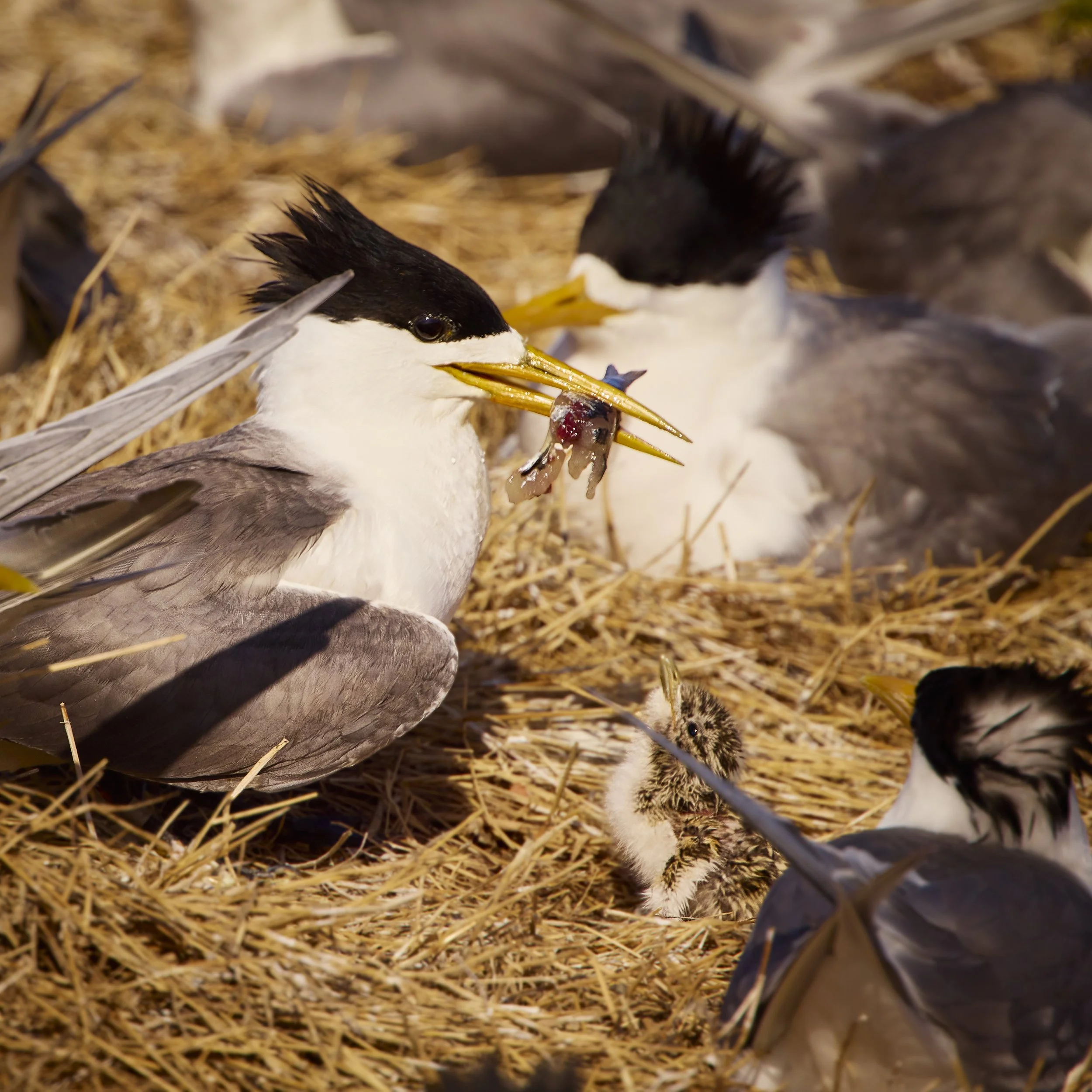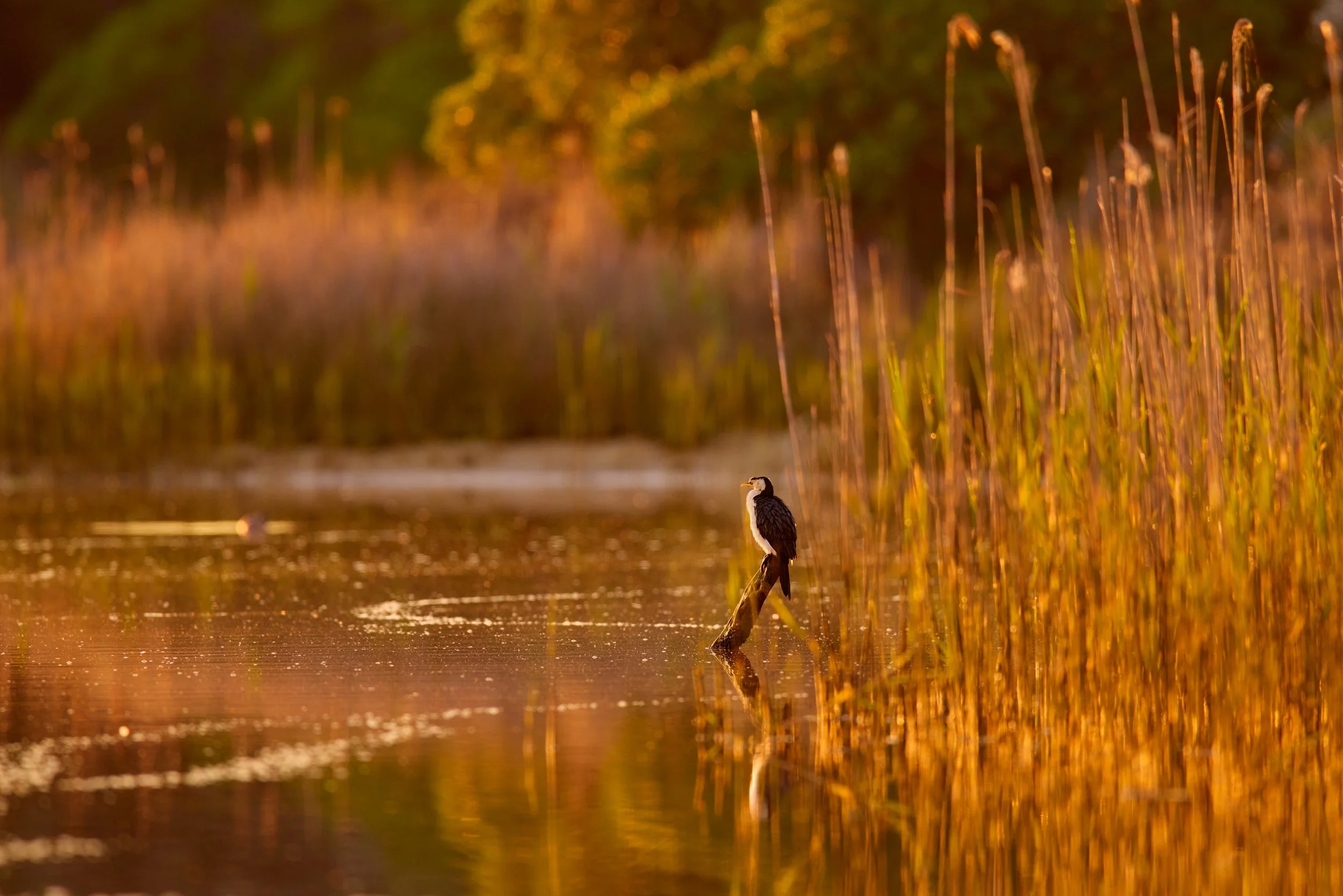The Ethics of Wildlife Photography: Respecting Nature with Every Click
If you enjoy bird and wildlife photography, there’s probably no denying that it’s wildly addictive — and a healthy addiction is! The thrill of spotting a flash of feathers, the quiet tension of lining up the shot, the silent cheer when your subject stays just long enough for one more frame… It’s magic.
But as nature photographers, we carry more than just our cameras — we carry responsibility.
The best wildlife images don’t just capture beauty — they honour the lives and environments of the creatures we photograph. In a world where habitat loss, climate change and human impact are putting increasing pressure on wildlife, our behaviour in the field matters more than ever.
So whether you’re crouched in the bush with a long lens or following a Superb Fairy-wren on your morning walk, here are some key ethical reminders to keep your impact light and your intentions respectful.
A Great Egret, searching for a feed at dawn, on a crisp Spring morning.
Taken with Canon R5 Mark II & Canon RF 600mm f/4 - settings: 600mm | f/4 | 1/800 sec | ISO 500
1. Wildlife First, Photo Second
I’m sure there have been times when, in the excitement of possibly capturing a special image, we had for a moment, put ourselves first and the animal second. We’re not perfect (and certainly not all of the time) — and I’ve, admittedly, been guilty of this.
Very early on in my birding journey, I met a few photographers who had spotted the critically endangered Australasian Bittern feeding amongst the marshes and reeds. But it was difficult to see clearly, and one of the photographers insisted that he would hop into his ute and drive around to where the bird had been spotted — the idea being that the loud engine would flush the bird out into the open. In the excitement of possibly seeing my first ‘lifer’ bird, I didn’t voice my objection to the idea; I didn’t stop it; I was a bystander who silently accepted. The plan worked. The bird flew out from where it’d been hiding and I got a few photos of the elusive Bittern. But I was wracked with guilt and I will never forget that moment.
So, in case it’s not obvious, the message here is that no image is worth causing distress or harm. If your presence adversely alters an animal's behaviour — they appear uneasy or agitated, stop feeding, vocalise alarms, or keep moving away from you — these are signs that they’re giving you the palm; you're too close and they don’t like it. It’s important that we learn to recognise signs of stress and back off when needed. But also bear in mind that just because an animal doesn't flee, this doesn't mean it's comfortable.
Ethical photography means tuning in to the subtle cues and respecting personal space, especially given that our subjects can't ask us for it. Our goal is to witness, not interfere — unless of course, they’re injured and need our help.
2. Tread Lightly
Sometimes, we might feel that we need to get off the beaten path to get closer to our subject, or improve the angle or composition. Trampling through undergrowth may help you to achieve your objective, but it can destroy nests, disturb ecosystems, or erode sensitive environments. There are good reasons why certain paths have been forged before us, or why glaring signs are in place telling us to stay on the path, boardwalk or trail. So, stick to paths or tread carefully, especially in delicate habitats like wetlands, grasslands, and alpine areas.
Sometimes, the most responsible choice is choosing not to get the shot. And that’s totally okay.
A Crested Tern about to feed its patient and hungry chick a delicious half-eaten Sardine or Anchovie. These birds were nesting on a cliff top in a busy tourist area, and were not bothered by the crowds.
Taken with Canon R5 & Canon RF 100-500mm f/4.5-7.1 - settings: 700mm (with 1.4x TC) | f/10 | 1/2000 sec | ISO 500
3. Nesting Birds Need Privacy
It’s probably no surprise that nesting is one of the most sensitive times in a bird’s life. Disturbances can cause parents to abandon nests, leave eggs exposed, or draw attention from predators.
Here, I’m not talking about really public nesting sites — for example, where hundreds of birds in a colony gather in an open location every year and are comfortable with human presence. Rather, I’m talking about sites where birds are nesting discreetly and you being a ‘Peeping Tom’ is putting them on high alert and making them uncomfortable. Also remember that while some birds may naturally nest in quite open spaces (for example, the endangered Hooded Plover typically nests on sand dunes along the high-tide line on beaches), this is not an invitation for you to drop by during your beach walks. In these circumstances, unless you have a super telephoto lens that allows you to keep a long distance, you really shouldn’t hang around like a bad smell (and if they can’t smell you, I’m certain they can see you).
The survival of their species may depend on you just doing the right thing by them — leaving them and their family alone!
4. Never Bait or Feed
Feeding wildlife might seem harmless, but it can have serious consequences: dependency on human-provided food, altered behaviour, increased risk of predation, or dietary harm. As for baiting — that’s inhumane and plainly wrong — I’ll stop here before I burst into expletives.
The art of wildlife photography lies in patience and fieldcraft. Let nature unfold naturally. It may take longer, but the rewards — ethically and artistically — are far greater.
5. Leave No Trace (Including Rubbish!)
It should go without saying, but always take your rubbish with you. That includes snack wrappers, water bottles, lens wipes, cable ties, toilet paper and anything else you brought in.
Even biodegradable items like orange peels or food scraps can be harmful to wildlife or disrupt local ecosystems. Respect the environment as if it were your own backyard — because in a broader sense, it is.
6. Fly Responsibly (If You Use a Drone)
Drones can capture breathtaking perspectives — but they also come with serious responsibilities. When flown too close, drones can stress wildlife, disrupt nesting birds, or even trigger aggressive responses. There have been far too many instances of birds being injured by careless drone pilots.
Always research and follow local laws and flight restrictions, especially in national parks and conservation areas where drones are often prohibited. Avoid flying near animals altogether, particularly during breeding seasons or in sensitive habitats.
If you're unsure whether it's safe or appropriate to launch, it probably isn't. When in doubt, keep the drone grounded and enjoy the moment from eye level.
7. Be Mindful of Playback
Playback (e.g., using recorded calls to attract birds) is a controversial tool. When overused or used irresponsibly, it can stress animals, disrupt mating behaviour, and even attract predators.
If you decide that you really need to use playback, do so sparingly, ethically, and always with the animal’s welfare in mind. Avoid using it during breeding season, keep volume low, and limit the duration.
8. Be Discreet About Locations
Sharing the exact location of rare or vulnerable species online can unintentionally attract crowds (putting extra pressure on those animals or their habitat) and worse, animal smugglers or poachers.
Consider leaving out GPS data from your images and avoid disclosing to your Instagram followers and other social media platforms the specific locations of your wildlife encounter unless you’re sure doing so won’t cause harm. Protect what you love by keeping it a little mysterious.
9. Lead by Example
We all start somewhere, and the best way to promote ethical photography is to model it ourselves. Whether you’re mentoring a beginner or just out with mates, your actions set the tone.
Educate gently, speak up kindly, and celebrate others who do the right thing. A respectful, conservation-minded community benefits everyone — especially the wildlife.
A mother koala and her joey, basking in the warmth of the early morning sun.
Taken with Fujifilm XH2 & Tamron 150-500mm f/5.6-6.7 - settings: 434mm | f/6.3 | 1/400 sec | ISO 500
Wrapping Things Up
So, being ethical in the field isn’t difficult — it just takes awareness and intention. When we know better, we can do better. The more we practise acting in ways that minimise our impact, the more instinctive those choices become.
At its core, ethical photography is about consistently choosing to respect the natural world that we’re so lucky to observe, spend time in, and capture.
So let’s keep nature wild, our footprints light, and our shutters respectful.
As always, happy (ethical) shooting!
My Field Code of Ethics for Bird & Wildlife Photography
✔ Wildlife first — always.
✔ Keep your distance — use a long lens and respect animal space.
✔ Move quietly and tread lightly — stay on paths where possible.
✔ Never bait, feed, or harass wildlife.
✔ Avoid nesting birds and sensitive breeding sites.
✔ Take all rubbish (even biodegradable) home with you.
✔ Use call playback sparingly, or not at all — especially during breeding season.
✔ Be cautious when sharing locations — protect rare or vulnerable species.
✔ Educate others with kindness and lead by example.
✔ Leave every place the same as — if not better than — you found it.
Little Pied Cormorant enjoying the sunrise from its private perch on the banks of this liquid gold river.
Taken with Canon R5 Mark II & Canon RF 600mm f/4 - settings: 840mm (with 1.4x TC) | f/5.6 | 1/160 sec | ISO 1000




